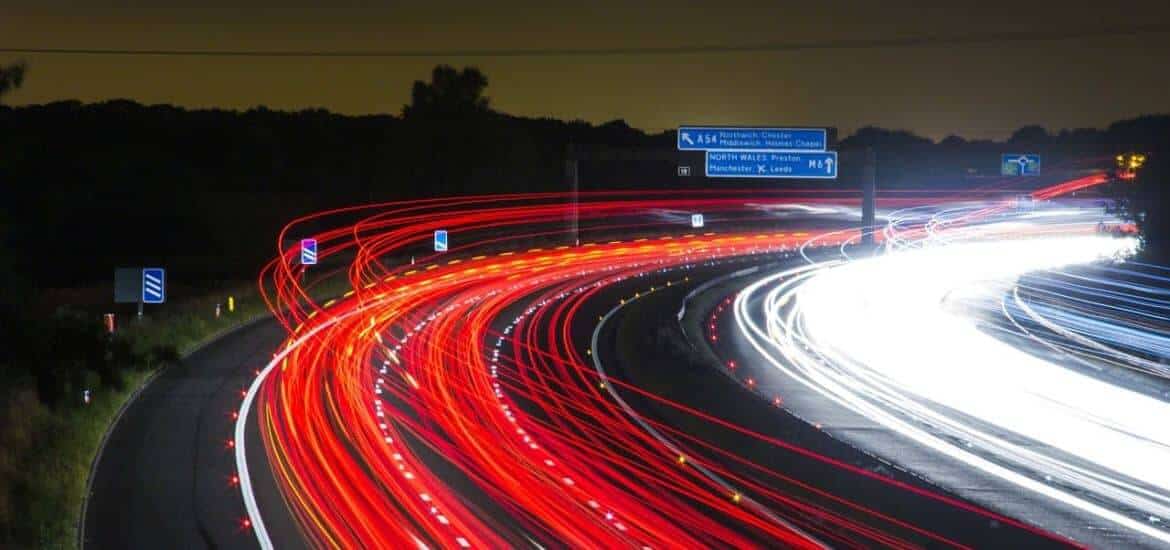Highway development shares the effects with other human activities that degrade the natural environment, highways (as well as power line rights-of-way and other transportation routes) have unique impacts associated with their linear form. Within forested landscapes, highways act as concave corridors, areas that exhibit lower vegetation heights than the surrounding habitat matrix. In agricultural and some rangeland landscapes where dense vegetation is encouraged along the roadsides, highways may act as convex corridors. These highway corridors may function as:
- specialized habitats,
- conduits of movement,
- barriers or filters to movement, or
- sources of effects on the surrounding habitats
Exactly how the corridor will function depends on the condition of the larger landscape, not simply the habitat adjacent to the corridor. For example, a highway corridor in a forested landscape will functions differently than a corridor bordered by forest, but which exists within a landscape dominated by agricultural land. Highway development is also unique in its facilitation of secondary development.

The direct, indirect, and cumulative impacts of highway development can be grouped into three general categories:
- Destruction of habitat (resulting in the elimination of certain habitat types and their replacement with non-natural uses or with specialized semi-natural habitats).
- Fragmentation of habitat (resulting in the loss of habitat integrity through the creation of barriers to species and ecological processes).
- Degradation of habitat (resulting in the loss of habitat integrity through disturbance of resident species, contamination with pollutants, alteration of natural processes, and introduction of exotic species)
Destruction of Habitats – The most direct effect of highway development on ecosystems is the destruction of a natural habitat through its “conversion” to a transportation land use or “right-of-way”. Although natural vegetation may be preserved within the right-of-way, the original natural characteristics of the land are eliminated within the paved area and adjacent roadsides. The clearing of vegetation (trees, shrubs, grasses)and accompanying levelling operations (that destroy the original topography and soil profile) are the principal changes. In some cases, the natural vegetation may be replanted while in others different species are planted and the habitat values modified. In wetland environments, road construction may require filling and draining operations that destroy wetland habitats. In aquatic environments, flow alteration (via damming or channelization)may eliminate habitat. Dredging, filling, and draining required by road construction also destroy aquatic habitat.
Fragmentation of habitats – In general, highway development rarely eliminates entire habitat types, but instead destroys part of a habitat, leaving other areas intact. In most instances this local habitat destruction is better thought of as habitat fragmentation. Such fragmentation is the principal cause of the loss of “area-sensitive” species and is considered the most serious threat to biological diversity.
Degradation of Habitats – Degradation of habitats specifically refers to a decrease in the health or ecological integrity of the “intact” habitat. In the case of highway development, this degradation is closely associated with fragmentation and what many researchers call the “edge effect”. This edge effect can be viewed as a reduction in habitat integrity at the boundary of a highway corridor caused by disturbance, contamination, or other degrading factors that extend into the natural habitat. In addition to direct toxicity and behavioural effects on resident organisms, this degradation includes the alteration of natural processes such as water flow, fire regime, and species interactions. Biological invaders are a particular problem along roadway corridors that can seriously degrade natural systems by modifying species interactions.
Loss of Natural Resources due to road development
- Forest –Roads running through forest area and plantations may be the cause of destruction of trees in the forest and alteration of ecology of the forest.
- Fisheries – Roads prevent longitudinal and lateral migration of fishes in the flood plain. Obstruct movement of fishes onto natural feeding and breeding grounds in the flood plain.
- Wetland and Wetland Habitat – The road may encroach wetlands which may alter the ecology of wetlands and may cause destruction of wetland habitat.
- Erosion and Siltation – Causes erosion during flood and siltation in the downstream.
- Drainage Congestion /Water logging – Roads interfere with cross drainage and can cause flooding or drainage congestion in adjacent areas during periods of high precipitation. May cause crop damage, water pollution and breeding of mosquitoes.
- Regional Hydrology/Flooding – Roads constructed across flood plains perpendicular to the direction of water flow cause back water effect and increase duration, frequency and extent of flooding in the up stream.
- Obstruction to Waste water flow – Roads may obstruct the drainage of sewage and industrial waste water loading to serious pollution problem.
- Loss of Agricultural Lands – Construction of any road is associated with the loss of agricultural lands. Scattered borrow pits, unauthorized growth around road , erosion result in marred landscape.
Potential risks – Resettlement Post Planning Period –
- Landlessness
- Joblessness
- Homelessness
- Marginalization
- Food Insecurity
- Loss of Access to Common Property
- Social Disintegration
- Loss of Access to Community Services
- Violation of Human Rights
Compensations
It is a legal obligation to provide compensation to those affected. Amount and nature of compensation differs from place to place but broadly it can be divided in following types for people affected by development of Roads –

- compensation for loss of land and crops/trees
- compensation for structures (residential/commercial) and other immovable assets
- assistance for loss of business/wage income
- rebuilding and/or restoration of community resources/facilities